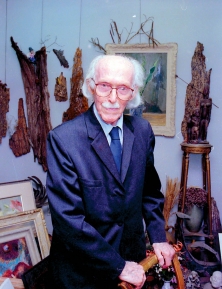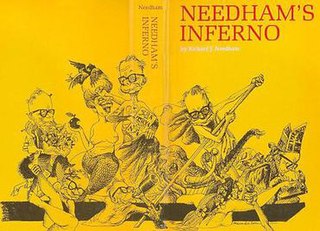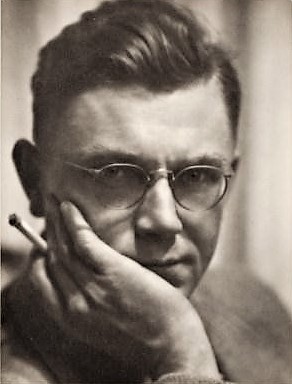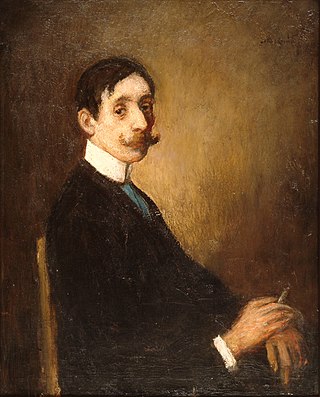William Raphael, born Israel Rafalsky, was a Prussian-born Canadian painter of portraits, still lifes, genre scenes and landscapes, best known for his lively scenes of the Montreal harbour and market life. He was the first Jewish professional artist to establish himself in Canada, a charter member of Montreal's Society of Canadian Artists in 1868, a member of the Ontario Society of Artists in 1879 and a charter member of the Canadian Academy of Arts in 1880.

Louis Muhlstock, LL.D. was a Canadian painter best known for his depictions of the Great Depression and for landscapes and urban scenes in and around Montreal.

Duncan Ian Macpherson, CM was a Canadian editorial cartoonist. He drew for the Montreal Standard and for Maclean's, illustrating the writings of Gregory Clark and Robert Thomas Allen. He is most famous for his humorous political cartoons for the Toronto Star; from 1958 until 1993. His syndicated cartoons appeared in seven other Canadian newspapers, in Time, The New York Times, Chicago Daily News and nearly 150 newspapers across the world.
Sam Borenstein was a Canadian painter. During his forty-year career he painted numerous scenes of Montreal and Laurentian villages and Quebec landscapes bustling with human activity, using brilliant colours and exuberant brushwork. Borenstein was best known for his expressionistic cityscapes and rural scenes, but also produced numerous portraits and still lifes.
The Eastern Group of Painters was a group of Canadian artists formed in 1938 in Montreal, Quebec for exhibition purposes and showing together as a group till 1950. It included Montreal artists whose common interest was painting and an art for art's sake aesthetic, not the espousal of a nationalist theory as was the case with the Group of Seven or the Canadian Group of Painters. The group's members included Alexander Bercovitch, Goodridge Roberts, Eric Goldberg, Jack Weldon Humphrey, John Goodwin Lyman, and Jori Smith. In 1939, Jack Humphrey was replaced by Philip Surrey and Bercovitch resigned in 1942.

George Campbell "Cam" Tinning, known as Campbell Tinning, was a Canadian painter, graphic designer, muralist, and illustrator. He was an Official Second World War artist; the only one born in Saskatchewan. After the war, he resided in Montreal but travelled extensively and painted in every Canadian province, the United States, Jamaica, Italy, France, England and Scotland. In 1970, he was elected a full member of the Royal Canadian Academy of Arts.
Valentin Gallery is an art gallery in Quebec. Created in 1934, it was first called "L'Art français" and had its start on Laurier Street in Montreal. Owners Lucienne (1900-1992) and Louis (1890-1956) Lange initially showed works by French artists. By the 1940s they were offering art by Marc-Aurèle Fortin and Philip Surrey. In 1975, Jean-Pierre Valentin purchased the gallery. The gallery moved to its present Sherbrooke Street location later and changed the name to Valentin Gallery.
The Contemporary Arts Society was founded by John Lyman in 1939 to promote modern art in Montreal, at a time when Canada was dominated by academic art. Lyman was the Society's first president. The additional officers were vice-president Paul-Émile Borduas, secretary Fritz Brandtner, and treasurer Philip Surrey. The Society lasted until 1948.
Carol Wainio is a Canadian painter. Her work, known for its visual complexity and monochrome color palette, has been exhibited in major art galleries in Canada, the U.S., Europe and China. She has won multiple awards, including the Governor General's Award in Visual and Media Arts.
Alfred Pinsky was a Canadian artist and art educator. He was described as part of the informal Jewish Painters of Montreal group.

Ghitta Caiserman-Roth was a Canadian painter and printmaker. She was a founder of the Montreal Artist School and her work is in the National Gallery of Canada. Caiserman-Roth was also an associate member of the Royal Canadian Academy and the first painter to receive the Governor General's Award for Visual Media and Art.

Philip Surrey LL. D. (1910-1990) was a Canadian artist known for his figurative scenes of Montreal. A founding member of the Contemporary Arts Society, and Montreal Men's Press Club, Surrey was part of Montreal's cultural elite during the late 1930s and 1940s. In recognition of his artistic accomplishment he was elected to the Royal Canadian Academy of Arts, awarded a Canadian Centennial Medal in 1967 and was appointed to the Order of Canada in 1982.
Rita Briansky is a Polish-born Canadian painter and printmaker. Briansky is associated with the Jewish Painters of Montreal.
Roslyn Swartzman was a Canadian printmaker, painter, and sculptor.

F. S. Coburn D.C.L., also known as Frederick Simpson Coburn, was a Canadian painter, illustrator and a photographer of note.
Moses Reinblatt was a Canadian painter, printmaker, sculptor, and art teacher. He was associated with the Jewish Painters of Montreal.
Herman Heimlich was a Hungarian-born Canadian painter. He was associated with the Jewish Painters of Montreal.

James D. Duncan, the first Irish artist to emigrate to Lower Canada, is best known as a prolific watercolorist, but he was also a painter in oils, made the first tint-stone lithographs published in Canada, took photographs and created designs for coinage and ornamental printing. He was a painstaking teacher of drawing in several institutions as well as giving private lessons.

Philip John Bainbrigge was a British military officer and painter who served in what was then called Upper and Lower Canada from 1836 to 1843.
Alexander Bercovitch was a painter, set designer and teacher, known for his lively picturing and Expressionist intensity of colour. He was an important part of the art scene in Montreal in the 1930s and 1940s, as well as a founding member of the Eastern Group of Painters in 1938 and the Contemporary Arts Society in 1939.








